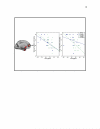Default mode network connectivity in children with a history of preschool onset depression
- PMID: 22519864
- PMCID: PMC3437619
- DOI: 10.1111/j.1469-7610.2012.02552.x
Default mode network connectivity in children with a history of preschool onset depression
Abstract
Background: Atypical Default Mode Network (DMN) functional connectivity has been previously reported in depressed adults. However, there is relatively little data informing the developmental nature of this phenomenon. The current case-control study examined the DMN in a unique prospective sample of school-age children with a previous history of preschool depression.
Methods: DMN functional connectivity was assessed using resting state functional connectivity magnetic resonance imaging data and the posterior cingulate (PCC) as a seed region of interest. Thirty-nine medication naïve school age children (21 with a history of preschool depression and 18 healthy peers) and their families who were ascertained as preschoolers and prospectively assessed over at least 4 annual waves as part of a federally funded study of preschool depression were included.
Results: Decreased connectivity between the PCC and regions within the middle temporal gyrus (MTG), inferior parietal lobule, and cerebellum was found in children with known depression during the preschool period. Increased connectivity between the PCC and regions within the subgenual and anterior cingulate cortices and anterior MTG bilaterally was also found in these children. Additionally, a clinically relevant 'brain-behavior' relationship between atypical functional connectivity of the PCC and disruptions in emotion regulation was identified.
Conclusions: To our knowledge, this is the first study to examine the DMN in children known to have experienced the onset of a clinically significant depressive syndrome during preschool. Results suggest that a history of preschool depression is associated with atypical DMN connectivity. However, longitudinal studies are needed to clarify whether the current findings of atypical DMN connectivity are a precursor or a consequence of preschool depression.
© 2012 The Authors. Journal of Child Psychology and Psychiatry © 2012 Association for Child and Adolescent Mental Health.
Figures


References
-
- Angold A, Costello EJ. The Child and Adolescent Psychiatric Assessment (CAPA) Journal of the American Academy of Child and Adolescent Psychiatry. 2000;39(1):39–48. - PubMed
-
- APA . Diagnostic and Statistical Manual of Mental Disorders, Fourth Edition, Text Revision. American Psychiatric Association; Washington, D.C.: 2000.
-
- Bird HR, Gould MS, Staghezza B. Aggregating data from multiple informants in child psychiatry epidemiological research. Journal of the American Academy of Child and Adolescent Psychiatry. 1992;31(1):78–85. - PubMed
Publication types
MeSH terms
Grants and funding
LinkOut - more resources
Full Text Sources
Medical

